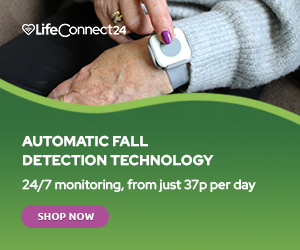Many older people experience hip problems, which can be debilitating and prevent you from doing the things you enjoy.
The hip is the largest ball-and-socket joint in your body. It’s designed to enable flexible movement and withstand a lot of wear and tear but it’s still susceptible to damage as you get older.
You put stress on your hip with pretty much every step you take and even each time you roll over in bed. Cartilage can wear down, tendons and muscles can become overused, and a fall can break bones in the hip, which tend to become brittle over time.
According to the NHS, the majority of hip problems in adults are caused by osteoarthritis, which affects about eight million people.
In other cases, however, the cause of hip discomfort can be difficult to pinpoint because of the issue of referred pain. For example, problems in your hip may cause symptoms elsewhere, including your groin, buttocks or thigh, and ailments in your lower back may radiate pain to your hip.
As well as the pain itself, hip problems can result in deformity of the joint, a reduced range of motion, and a limp.
If your hip becomes misshapen, medical specialists may consider a total hip replacement (arthroplasty). Older adults with hip fractures also often need surgical repair or replacement to counter increased risk of death.
Arthritis and Other Medical Conditions That Cause Hip Problems
Rheumatoid arthritis and osteoarthritis can both cause hip pain by inflaming the joint and breaking down the cartilage that cushions the bones.
The most common cause of chronic hip problems, osteoarthritis is more prevalent in women, who have wider hips in proportion to the rest of their body.
There’s currently no cure for arthritis but there are ways to reduce the resulting hip pain, including:
- Weight loss.
- Low-impact exercises.
- Walking aids.
- Nonsteroidal anti-inflammatory drugs (NSAIDs).
- Surgery, including hip joint replacement.
Hip problems can also be the result of:
- Bursitis – when the sacs of liquid (bursae) in the hip become inflamed, leading to friction as tendons, muscles and bones rub together.
- Tendonitis – inflammation of the tendons that connect bones and muscles, generally the result of repetitive stress caused by overuse of the hip.
- Strained muscles or ligaments that support the hip joint.
Without treatment, hip problems may get worse as damage to the joint escalates, and the fibrous ring of cartilage surrounding the hip socket may eventually become torn.
You should get immediate medical help if:
- Your hip pain is intense or developed quickly – particularly after a fall.
- You heard a popping sound when you hurt your hip.
- Your joint looks deformed.
- You can’t put weight on your hip.
- You can’t move your hip or leg.
Hip Fractures
A hip fracture refers to a break or crack at the top of the thigh bone (femur), near the hip joint, typically resulting from a combination of a fall and weak bones due to osteoporosis. About 76,000 people suffer a fractured hip each year in the UK.
Hip fractures – and hip replacements – are common in older people. A fractured hip results in immediate, severe pain, and needs urgent medical attention to avoid complications such as a blood clot in the leg.
A hip fracture almost always requires surgery, followed by bed rest, medication and physiotherapy. A complete or partial hip replacement is often necessary. Other cases can be fixed with insertion in the hip of plates and rods or screws.
Which type of surgery you need will depend on factors such as:
- Your age.
- Where the femur has been damaged.
- Your level of mobility before the fracture.
- General condition of your hip joint and bones.
Hip Replacements
The NHS says adults of any age can be considered for a hip replacement, and most are carried out on people aged 60 to 80.
However, in 2016 the BBC reported how hip replacements for people under 60 had risen 76 per cent over a decade. The Royal College of Surgeons (RCS) put this increase down to:
- Increased confidence in the durability of replacement joints.
- Improvements in surgical techniques and prosthetics.
- Hip replacements no longer being regarded as a last resort.
Although hip replacement requires physiotherapy to get used to the new joint, it’s a common operation that’s usually successful.
Modern artificial hip joints are designed to last for a at least 15 years, and health experts say they offer significant benefits in restoring quality of life for patients – free from pain and with better mobility.
Recuperation after hip replacement can be demanding and requires commitment. You’re likely to need a walking frame or crutches for some time as well as a rehab programme including physiotherapy.
A serious but rare problem following a hip replacement is a periprosthetic fracture – a broken bone near the components of the replacement joint. This needs to be treated as soon as possible, usually with further surgery.
VAT Exemption
Problems with your hips, mobility or hip replacements qualify you for VAT Exemption when you order a personal alarm system from LifeConnect24. HMRC state that a product which has been “designed or adapted for a disability” qualifies for VAT exemption.
For a person to qualify they must meet certain criteria set by HMRC. These criteria state that the customer must have a long-term illness, a terminal illness or a disability to qualify. When you order your LifeConnect24 personal alarm system online, if you have mobility or hip problems, you can select our VAT Exempt prices which are £14.99 for the monthly plan, £135 for the annual plan or £165 for our fall detector plan.



Leave A Comment